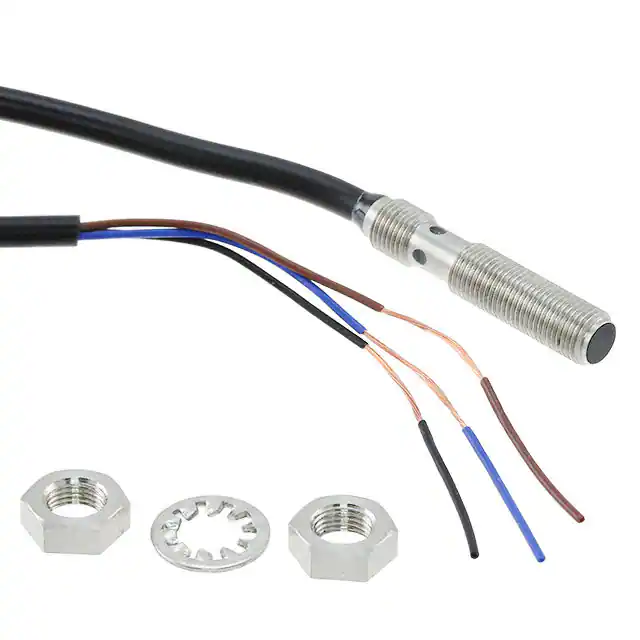Everything You Need to Know About the STM8S207S6T3C Microcontroller
If you're looking for a small, affordable, yet powerful microcontroller, the STM8S207S6T3C might be the right choice for you. In this article, we'll explore the main features, advantages, and drawbacks of this microcontroller, as well as some tips on how to get started with it.
Overview of the STM8S207S6T3C
The STM8S207S6T3C is part of the STM8S family of 8-bit microcontrollers from STMicroelectronics. It has a small 20-pin package, a maximum clock frequency of 24 MHz, and a Flash memory capacity of 32 KB. It also has a variety of integrated peripherals, including several timers, communication interfaces (UART, SPI, I2C), analog-to-digital converters (ADC), and a direct memory access (DMA) controller.
One of the main advantages of the STM8S207S6T3C is its low power consumption. It can operate with a supply voltage as low as 2.95 V and consume as little as 0.3 mA in low-power mode. This makes it suitable for battery-powered applications, such as sensors, remote controls, or IoT devices.
Another advantage of the STM8S207S6T3C is its affordability. It is one of the most budget-friendly microcontrollers from STMicroelectronics, with a suggested resale price of around $1. This makes it accessible to hobbyists, students, and small companies that need to prototype or manufacture low-volume products.
However, there are also some drawbacks to consider. First, the STM8S207S6T3C is an 8-bit microcontroller, which means it has a more limited address space and computational power than 16-bit or 32-bit microcontrollers. This can be a constraint for certain applications that require more advanced algorithms, complex data structures, or larger memories.
Second, the STM8S207S6T3C has a proprietary architecture and toolchain that may be less familiar or interoperable than other microcontrollers that use more established standards, such as ARM Cortex-M or AVR. This can imply a steeper learning curve, a higher dependence on vendor-specific software, and a lower community support than some alternatives.
Getting Started with the STM8S207S6T3C
If you want to start experimenting with the STM8S207S6T3C, here are some steps you can follow:
1. Get a development board: There are several PCBs available that integrate an STM8S207S6T3C microcontroller together with other components that facilitate its use, such as voltage regulators, crystals, and headers. Some examples are the STM8S207RBT6 Minimum System Board, the MIKROE-1275 EasyMx PRO v7 for STM8, or the STM8-SO8-DISCO Discovery Kit.
2. Install the software: You will need to download and install the STM8CubeMX and the STM32CubeIDE, which are the main software tools provided by STMicroelectronics to configure and program the microcontroller. These tools are available for free and run on Windows, Linux, or macOS.
3. Learn the basics: You can start by exploring the examples and documentation available on the STMicroelectronics website, which cover topics such as GPIO, timers, interrupts, UART, SPI, I2C, ADC, and DMA. You can also search for online tutorials, forums, or videos that explain how to use the STM8S207S6T3C for specific projects or applications.
4. Build your own project: Once you feel comfortable with the microcontroller, you can design and implement your own project. Here are some ideas to inspire you:
A smart thermostat that uses the ADC to read temperature sensors and the UART to communicate with a display or a smartphone app.
A fitness tracker that uses the timers to measure time intervals and the SPI to interface with an accelerometer or a heart rate sensor.
A remote-controlled car that uses the DMA to transfer data between the peripherals and the memory and the I2C to send commands from a wireless controller.
Conclusion
The STM8S207S6T3C is a versatile and affordable microcontroller that can be a great choice for small-scale embedded projects that require low power consumption and basic functionality. While it may have some limitations in terms of address space and software ecosystem, it offers a wide range of integrated peripherals and a low-cost entry point. With the right tools and resources, it can be easy to use and fun to experiment with.

STM8S207S6T3C
- Part Number :
- STM8S207S6T3C
- Manufacturer :
- STMicroelectronics
- Description :
- IC MCU 8BIT 32KB FLASH 44LQFP
- Datasheet :
-
 STM8S207S6T3C.pdf
STM8S207S6T3C.pdf
- Unit Price :
- Request a Quote
- In Stock :
- 2095
- Lead Time :
- To be Confirmed
- Quick Inquiry :
- - + Add To Cart
Request a Quote
STM8S207S6T3C Specifications
- Package/Case:
- 44-LQFP
- Packaging:
- Tray
- Series:
- STM8S
- ProductStatus:
- RoHS
- CoreProcessor:
- 24MHz
- CoreSize:
- 6K x 8
- Speed:
- 8-Bit
- Connectivity:
- 1K x 8
- Peripherals:
- Active
- NumberofI/O:
- Brown-out Detect/Reset, POR, PWM, WDT
- ProgramMemorySize:
- I²C, IrDA, LINbus, SPI, UART/USART
- ProgramMemoryType:
- Surface Mount
- EEPROMSize:
- 34
- RAMSize:
- STM8
- Voltage-Supply(Vcc/Vdd):
- A/D 9x10b
- DataConverters:
- Internal
- OscillatorType:
- 32KB (32K x 8)
- OperatingTemperature:
- FLASH
- MountingType:
- -40°C ~ 125°C (TA)
STM8S207S6T3C Guarantees

-
Service Guarantees
We guarantee 100% customer satisfaction.
Our experienced sales team and tech support team back our services to satisfy all our customers.

-
Quality Guarantees
We provide 90 days warranty.
If the items you received were not in perfect quality, we would be responsible for your refund or replacement, but the items must be returned in their original condition.
Certified Quality
 View the Certificates
View the Certificates

















